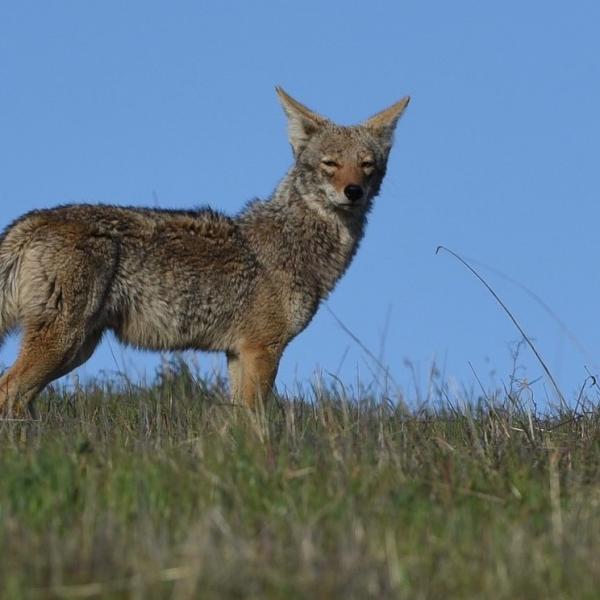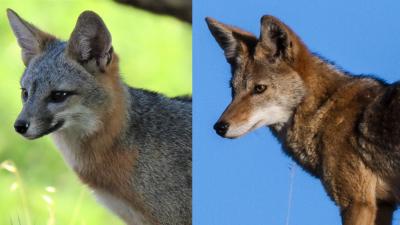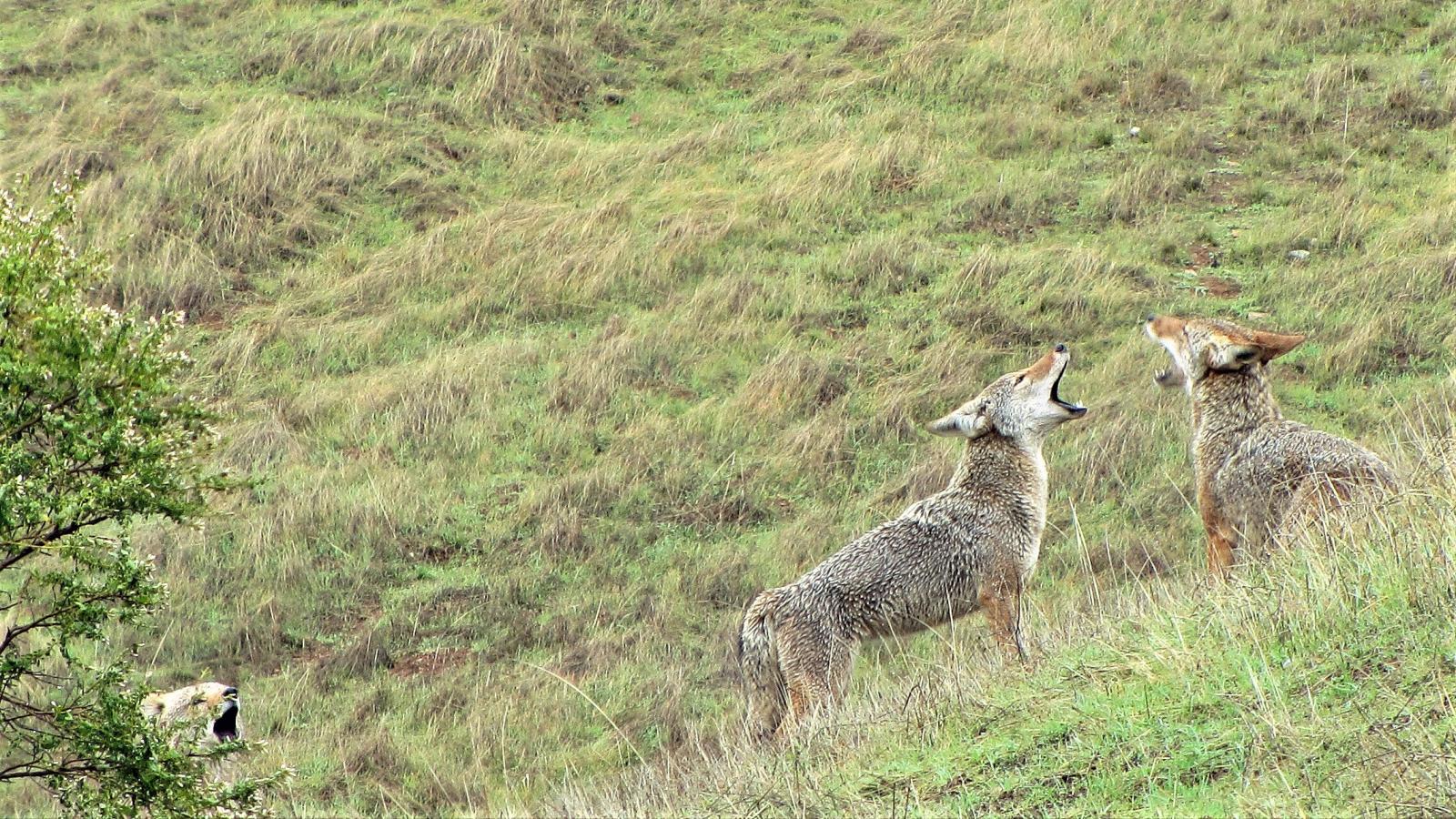“Coyote” is a corruption of "coyotl" the ancient Aztec word for barking dog. The curious and playful animal has a recurring role in Native American myths as the trickster who brings fire to the people, but often gets mixed up in pranks that go awry.
Coyotes are found in nearly every type of habitat in California, from deserts to mountains and from wildlands to urban areas. It is estimated that there are between 250,000-750,000 coyotes living throughout California. They are extremely adaptable and can survive on whatever food is available. While they typically forage for birds, mice, insects, fruits and rabbits, they have been known to pick through garbage cans and attack pets.

Coyote Fast Facts
- Physical description: The coyote (Canis latrans) is a member of the dog family and is native to California. It resembles a small shepherd dog in size and shape, with large erect ears, a long snout and bushy black-tipped tail. Their long hair varies in color with geography and season from pale gray to rich reddish-brown.
- Behavior: Coyotes typically mate for life and breed once a year, producing a litter of about six pups. Dens are located in steep banks, rock crevices or underbrush. Sometimes a coyote will take over holes dug by badgers or foxes. Both parents share in rearing the young, and nonbreeding yearlings often stay with adult parents to help care for younger pups. Coyotes are active day or night, but are most often seen at dusk and dawn.
- Lifespan: Coyotes in the wild live to be about 14 years.
How to distinguish between a coyote and a gray fox
- Coyotes have a bushy tail with a dark tip. Their light colored front legs have dark vertical lines between knee and paw. They weigh between 20 and 40 pounds.
- Gray foxes have a black line of fur from the base of the spine to the tip of the tail. They weigh between eight and 15 pounds.

Never feed a coyote
Deliberately feeding a coyote puts people and pets at risk. Reducing conflicts between coyotes and humans depends in part on coyotes retaining their naturally cautious attitude around humans. Coyotes can lose their natural fear of people and become bold, even aggressive. Feeding coyotes is a citable offense on Midpen lands. If you see a person feeding coyotes, please notify our office with a description of the persons and vehicles involved.
What to do if you encounter a coyote
Although coyotes are curious by nature and may be interested in watching human activity, they are also shy and will not approach unless they have become too accustomed to humans.
- Keep your distance and do not approach the animal.
- Keep your pets on leash - the California Department of Fish and Wildlife recommends fixed leashes over retractable leashes.
- If a coyote approaches you or your pet, throw rocks or sticks near the coyote to frighten it.
- Use a loud authoritative voice to frighten the animal.
Report threats or attacks immediately
If you see a coyote behaving aggressively toward people or pets, contact a ranger or call us at 650-691-1200 (on weekends or after 5 p.m. on weekdays call 650-968-4411). The threat to public safety will be assessed and appropriate action will be taken.

